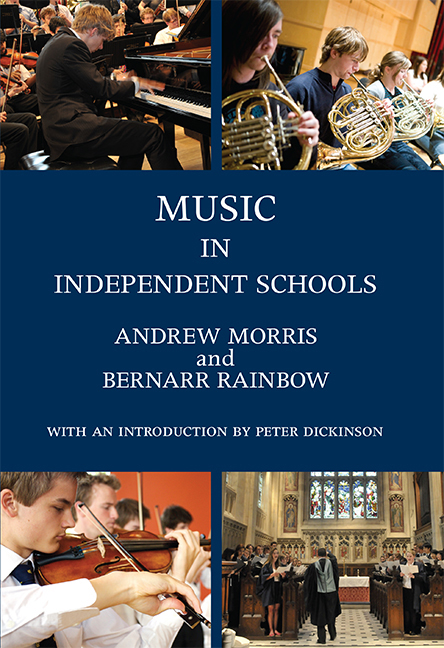Book contents
- Frontmatter
- Contents
- List of Plates
- General Editor's Foreword
- Editor's Introduction
- Biographical Notes
- List of Abbreviations
- PART I Studies from Music and the English Public School (1990)
- PART II The New Millennium
- SOME INDEPENDENT SCHOOLS IN THE NEW MILLENNIUM
- FURTHER TRADITIONS
- 8 Girls' Schools
- 9 The Earliest Years: The Work of Sam Dixon at Brighton College
- 10 Preparatory Schools
- 11 Choir Schools
- 12 Specialist Schools
- ORGANISATIONS
- Index
- Appendix
9 - The Earliest Years: The Work of Sam Dixon at Brighton College
from FURTHER TRADITIONS
Published online by Cambridge University Press: 05 October 2014
- Frontmatter
- Contents
- List of Plates
- General Editor's Foreword
- Editor's Introduction
- Biographical Notes
- List of Abbreviations
- PART I Studies from Music and the English Public School (1990)
- PART II The New Millennium
- SOME INDEPENDENT SCHOOLS IN THE NEW MILLENNIUM
- FURTHER TRADITIONS
- 8 Girls' Schools
- 9 The Earliest Years: The Work of Sam Dixon at Brighton College
- 10 Preparatory Schools
- 11 Choir Schools
- 12 Specialist Schools
- ORGANISATIONS
- Index
- Appendix
Summary
Since the 1950s, pre-preparatory schools (usually called pre-prep) have sprung up in many areas of the UK. Some of these schools are ‘stand-alone’ schools, having no direct affiliation with another institution, while others are part of a pre-existing preparatory school. Almost all these schools are co-educational. In the example below, the Nursery Year is for children of three years old and the Reception Year for children of four, while Years 1, 2 and 3 are for children of five, six and seven respectively. Children in the seven-plus age group proceed to a Preparatory School for their Year 4 education.
A good example of what can be achieved with these age groups is delivered at Brighton College Nursery and Pre-Prep School, where Sam Dixon, a composer of children's songs and musicals, is Director of Pre-Prep Music. The start of the Music Policy document states:
The main aim is to make music lessons fun and involve all children in music making, whatever their degree of experience in music outside the school. This is primarily achieved using song, which gives scope to introduce dramatic expression, movement, controlled use of percussion instruments and understanding of basic theory.
It is important to introduce music theory at the Foundation stage, just as reading and writing in language is introduced at this age.
- Type
- Chapter
- Information
- Music in Independent Schools , pp. 309 - 314Publisher: Boydell & BrewerPrint publication year: 2014

